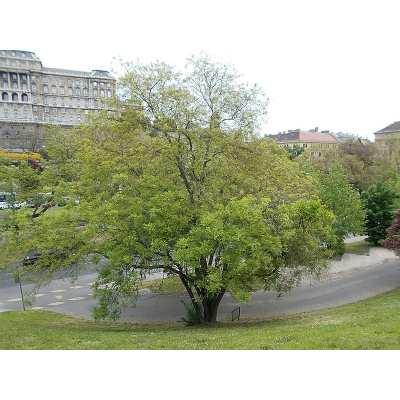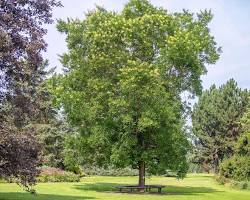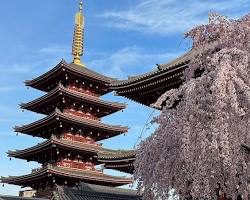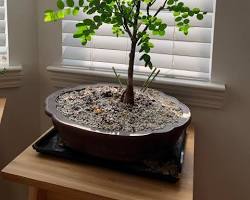The Japanese pagoda tree, also known as the Chinese student tree or honey tree, is a charming ornamental species regarded for its graceful silhouette, dense foliage, and fragrant white vegetation. While this tree offers a plethora of benefits, which includes ease of care, adaptability, and natural world attraction, it also possesses positive drawbacks that need to be taken into consideration before planting. In this comprehensive article, we’re going to delve into the pros and cons of Japanese pagoda trees, equipping you with the information you want to make an knowledgeable decision about whether this tree is a appropriate addition to your garden or landscape.
| Pro | Con |
|---|---|
| 1. Ease of Care | 1. Slow Growth |
| 2. Adaptability | 2. Weak Wood |
| 3. Urban Resilience | 3. Short Lifespan |
| 4. Wildlife Attraction | 4. Messy Flowers |
| 5. Nitrogen Fixation | 5. Toxic Seed Pods |
| 6. Cultural Significance | 6. Potential for Invasiveness |
PRO: Ease of Care
The Japanese pagoda tree (Sophora japonica) is a delightful addition to any lawn or panorama because of its first rate ease of care. For busy homeowners or people with limited gardening revel in, this tree gives an first rate preference. Its low-protection requirements imply that you can experience the beauty of this tree without continuously tending to its desires.
One of the standout functions of the Japanese pagoda tree is its capacity to thrive in a huge range of soil situations. Whether you have acidic, alkaline, or sandy soil, this tree can adapt and grow nicely. This adaptability extends to its drought tolerance, making it capable of withstanding durations of dry weather with out requiring frequent watering.
PRO: Adaptability
The adaptability of the Japanese pagoda tree is a true testament to its resilience. This species can thrive in loads of environmental conditions, making it an excellent preference for the ones dwelling in city regions or areas with difficult developing conditions. It can tolerate warmth, drought, and pollutants, making it a valuable asset for city environments wherein different bushes might battle.
Furthermore, the Japanese pagoda tree famous relative salt tolerance, making it a suitable choice for coastal areas. Its adaptability to specific conditions guarantees that you may revel in its beauty in a wide range of places without much hassle.
PRO: Urban Resilience
In an era in which urbanization is at the upward thrust, the Japanese pagoda tree’s urban resilience shines brightly. Its adaptability and ability to thrive in harsh conditions make it a natural fit for cities and towns. This tree can flourish even in regions with restrained area and excessive stages of pollutants.
The Japanese pagoda tree’s contribution to city greenery can’t be overstated. It provides aesthetic attraction and a hint of nature to parks, streetscapes, and green spaces, making urban environments greater livable and exciting for residents and visitors alike.

PRO: Wildlife Attraction
The Japanese pagoda tree is a magnet for natural world, thanks to its fragrant white flowers that bloom in overdue summer. These beautiful blossoms function an irresistible entice for numerous pollinators, along with bees, butterflies, and hummingbirds. As those pollinators visit the tree, they play a crucial role in retaining wholesome ecosystems and helping the growth of other flora within the region.
Additionally, the tree’s dense foliage provides a super setting for nesting and shelter for various fowl species. This function complements biodiversity within the area where the tree is planted, growing a mini-surroundings that may be loved through nature fans and birdwatchers.
PRO: Nitrogen Fixation
One of the terrific attributes of the Japanese pagoda tree is its capacity to fix nitrogen from the surroundings. This method, called nitrogen fixation, enriches the soil by way of converting atmospheric nitrogen right into a form that plant life can quite simply use. The end result is advanced soil fertility, which advantages not only the Japanese pagoda tree itself however also the surrounding plant life on your lawn or landscape.
By reducing the need for chemical fertilizers, this tree promotes sustainable gardening practices. It performs a function in minimizing the environmental effect of conventional fertilization strategies and contributes to more healthy, extra vibrant landscapes.
PRO: Cultural Significance
Beyond its ecological and horticultural merits, the Japanese pagoda tree holds tremendous cultural importance, mainly in China. This tree has been associated with diverse cultural symbols and values for hundreds of years. Its sleek silhouette, delicate vegetation, and wealthy history have made it a cherished a part of Chinese heritage.
In Chinese lifestyle, the Japanese pagoda tree has been linked to scholarly pastimes, tranquility, and toughness. Its presence in gardens and landscapes symbolizes a connection to the past and a reverence for nature’s splendor. Planting a Japanese pagoda tree may be a significant way to pay homage to this cultural history at the same time as including a touch of beauty on your environment.
CON: Slow Growth
While the Japanese pagoda tree offers severa benefits, it comes with positive drawbacks that capability growers ought to don’t forget. One outstanding disadvantage is its slow boom fee. This tree is not the right choice if you’re seeking rapid coloration or immediately aesthetic impact in your garden.
The Japanese pagoda tree usually calls for several years to reach adulthood and produce its full supplement of blooms. Therefore, if you’re looking for a tree which could speedy remodel your landscape, you may need to discover quicker-growing alternatives.
CON: Weak Wood
Another downside to be aware of is the relative weak spot of the Japanese pagoda tree’s timber. This characteristic makes it more vulnerable to harm from robust winds or the load of heavy snow accumulation. In regions vulnerable to extreme weather activities, including storms and blizzards, you could need to take precautions to shield the tree.
Providing additional guide or employing normal pruning practices can assist lessen the threat of department breakage. However, this preservation requirement is some thing to do not forget when finding out whether to plant a Japanese pagoda tree on your private home.
CON: Short Lifespan
Compared to a few other ornamental bushes, the Japanese pagoda tree has a tremendously short lifespan. On common, it lives for about 30 to forty years. While this will be sufficient for plenty homeowners and gardeners, it’s essential to preserve in thoughts that the tree’s longevity is confined compared to a few different tree species.
If your purpose is to plant a tree with a view to offer beauty, coloration, and an enduring legacy for future generations, you can want to explore options with longer lifespans. Consider your long-term landscaping desires while identifying whether or not the Japanese pagoda tree aligns with your vision.
CON: Messy Flowers
One capacity downside of the Japanese pagoda tree is its lovely however somewhat messy plants. The fragrant white blossoms that grace the tree can drop as they wither, creating a layer of petals on the ground. This may be mainly considerable on sidewalks, walkways, and patios positioned underneath the tree.
While the falling plants can create a picturesque scene, they’ll be perceived as a nuisance by means of a few owners, specifically those with excessive pedestrian visitors in the location. Regular cleaning and renovation can be important to keep these regions looking tidy.
CON: Toxic Seed Pods
It’s essential to be conscious that the Japanese pagoda tree produces seed pods which can be considered poisonous. These pods must not be fed on through human beings, pets, or flora and fauna. This toxicity can be a difficulty for households with younger youngsters or pets who can be tempted to ingest the pods.
Taking precautions to put off fallen seed pods promptly can assist mitigate this danger. Additionally, teaching family participants and friends approximately the tree’s poisonous pods can make contributions to a more secure environment.
CON: Potential for Invasiveness
In sure regions with favorable growing situations, the Japanese pagoda tree has the potential to turn out to be invasive. Invasive species can unfold aggressively, outcompeting local plant life and disrupting nearby ecosystems. Therefore, it’s essential to investigate the ability invasiveness of the tree to your precise area earlier than planting it.
If you stay in a place in which the Japanese pagoda tree has a records of becoming invasive, it’s really helpful to keep in mind opportunity tree species that won’t pose a chance to the nearby surroundings. Being a accountable gardener means making informed selections that prioritize the health and sustainability of your surroundings.
More about Japanese Pagode Trees:
A Blossoming Beauty
The Japanese pagoda tree is a deciduous species, meaning it sheds its leaves in the fall and regrows them inside the spring. Its leaves are organized in a dense canopy, presenting ample colour in the course of the hotter months. The tree’s most striking function is its cascading clusters of white flowers, which bloom in past due spring or early summer time. These aromatic blossoms now not simplest enhance the tree’s aesthetic attraction however also attract a number of pollinators, consisting of bees, butterflies, and hummingbirds.
A Resilient and Adaptable Species
The Japanese pagoda tree is an exceedingly resilient species, tolerating a extensive range of environmental conditions. It flourishes in diverse soil sorts, together with acidic, alkaline, and sandy soils. The tree is also drought-tolerant and may withstand intervals of dry climate with out supplemental watering. Additionally, it well-knownshows remarkable adaptability to urban environments, making it a famous desire for parks, streetscapes, and inexperienced areas in cities and towns.
A Haven for Wildlife
The Japanese pagoda tree’s dense foliage offers nesting and safe haven for numerous bird species, making it a valuable addition to natural world habitats. The tree’s aromatic white flowers also attract loads of pollinators, which include bees, butterflies, and hummingbirds, which play a essential role in preserving healthy ecosystems.
A Symbol of Serenity and Scholarly Pursuits
In Chinese tradition, the Japanese pagoda tree holds giant symbolic meaning. It is related to scholarly pastimes, tranquility, and durability. The tree’s sleek silhouette and delicate flora have long been popular for their beauty and symbolism.
Weighing the Considerations
While the Japanese pagoda tree offers a multitude of benefits, it’s miles important to don’t forget its ability drawbacks earlier than planting. The tree’s sluggish increase price might not be perfect for the ones searching for a fast-developing species with the intention to speedy provide coloration or aesthetic attraction. Additionally, the tree’s wooden is incredibly vulnerable, making it greater susceptible to harm from robust winds or heavy snow accumulation.
The Japanese pagoda tree’s seed pods are taken into consideration toxic and must not be consumed. This may be a problem for families with younger kids or pets who can be tempted to ingest the pods. In sure regions with favorable growing conditions, the tree has the capability to become invasive, outcompeting local flora and disrupting neighborhood ecosystems. It is vital to investigate the capability invasiveness of the tree on your region before planting.
Making an Informed Decision
Ultimately, the decision of whether or not or now not to plant a Japanese pagoda tree depends for your person wishes and preferences. If you’re searching for a low-renovation, adaptable, and wildlife-friendly tree that offers symbolic significance, the Japanese pagoda tree may be an remarkable preference for your garden or panorama. However, in case you are involved about sluggish boom, weak wood, capacity toxicity, or invasiveness, you may need to recollect opportunity tree species.
Read Next : Tricolor Beech Tree Pros and Cons



